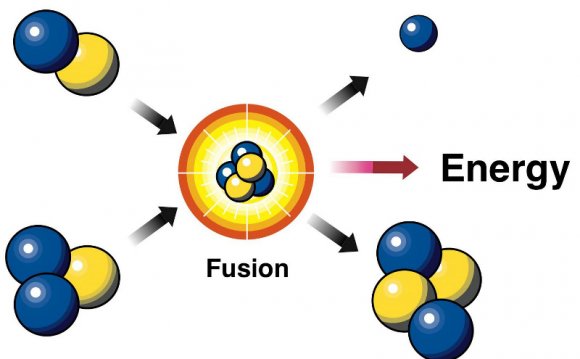
At first, it is important to distinguish between the total energy released and the energy that can be recovered in a reactor. In order to calculate the power of a reactor, it is necessary to be able precisely identify the individual components of this energy. The amount of energy depends strongly on the nucleus to be fissioned and also depends strongly on the kinetic energy of an incident neutron. In general, the nuclear fission results in the release of enormous quantities of energy.

Using the mass-energy equivalence, we get the Q-value of this reaction as: The atom masses of the reactant and products are: The reaction Q-value is calculated below: In case of deuterium, neutrons can be produced by the interaction of gamma rays (with a minimum energy of 2.22 MeV) with deuterium: Nuclides with low photodisintegration threshold energies. As can be seen from the table the lowest threshold have 9Be with 1.666 MeV and 2D with 2.226 MeV. On the other hand there are few nuclei with sufficiently low binding energy to be of practical interest. Most nuclei have binding energies in excess of 6 MeV, which is above the energy of most gamma rays from fission. It occurs when its energy exceeds the binding energy of the neutron in the nucleus. Neutrons can be produced also in (γ, n) reactions and therefore they are usually referred to as photoneutrons.Ī high energy photon ( gamma ray) can under certain conditions eject a neutron from a nucleus. Especially in nuclear reactors with D 2O moderator ( CANDU reactors) or with Be reflectors (some experimental reactors). In nuclear reactors the gamma radiation plays a significant role also in reactor kinetics and in a subcriticality control. The negative Q reactions are said to be endothermic (or endoergic) and they require a net energy input.

There is a net release of energy, since the kinetic energy of the final state is greater than the kinetic energy of the initial state.įor reactions in which there is a decrease in the kinetic energy of the products Q is negative. The positive Q reactions are said to be exothermic (or exergic). Which is the same as the excess kinetic energy of the final products:įor reactions in which there is an increase in the kinetic energy of the products Q is positive. The Q-value of this reaction is given by: This can also be expressed in the notation that we used so far, a + A → B + b, or even in a more compact notation, A(a,b)B. The Q-value of the reaction is defined as the difference between the sum of the masses of the initial reactants and the sum of the masses of the final products, in energy units (usually in MeV).Ĭonsider a typical reaction, in which the projectile a and the target A gives place to two products, B and b. The energetics of nuclear reactions is determined by the Q-value of that reaction. The nuclear binding energies are enormous, they are of the order of a million times greater than the electron binding energies of atoms. The difference is a measure of the nuclear binding energy which holds the nucleus together. The “missing” rest mass must therefore reappear as kinetic energy released in the reaction. In general, the total (relativistic) energy must be conserved. Generally, in both chemical and nuclear reactions, some conversion between rest mass and energy occurs, so that the products generally have smaller or greater mass than the reactants. This equivalence of the mass and energy is described by Einstein’s famous formula E = mc 2. It is one of the striking results of Einstein’s theory of relativity. According to this law mass and energy are equivalent and convertible one into the other.

In analyzing nuclear reactions, we have to apply the general law of conservation of mass-energy. Conservation of Energy in Nuclear Reactions


 0 kommentar(er)
0 kommentar(er)
